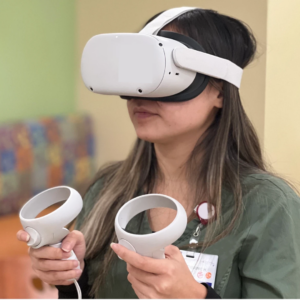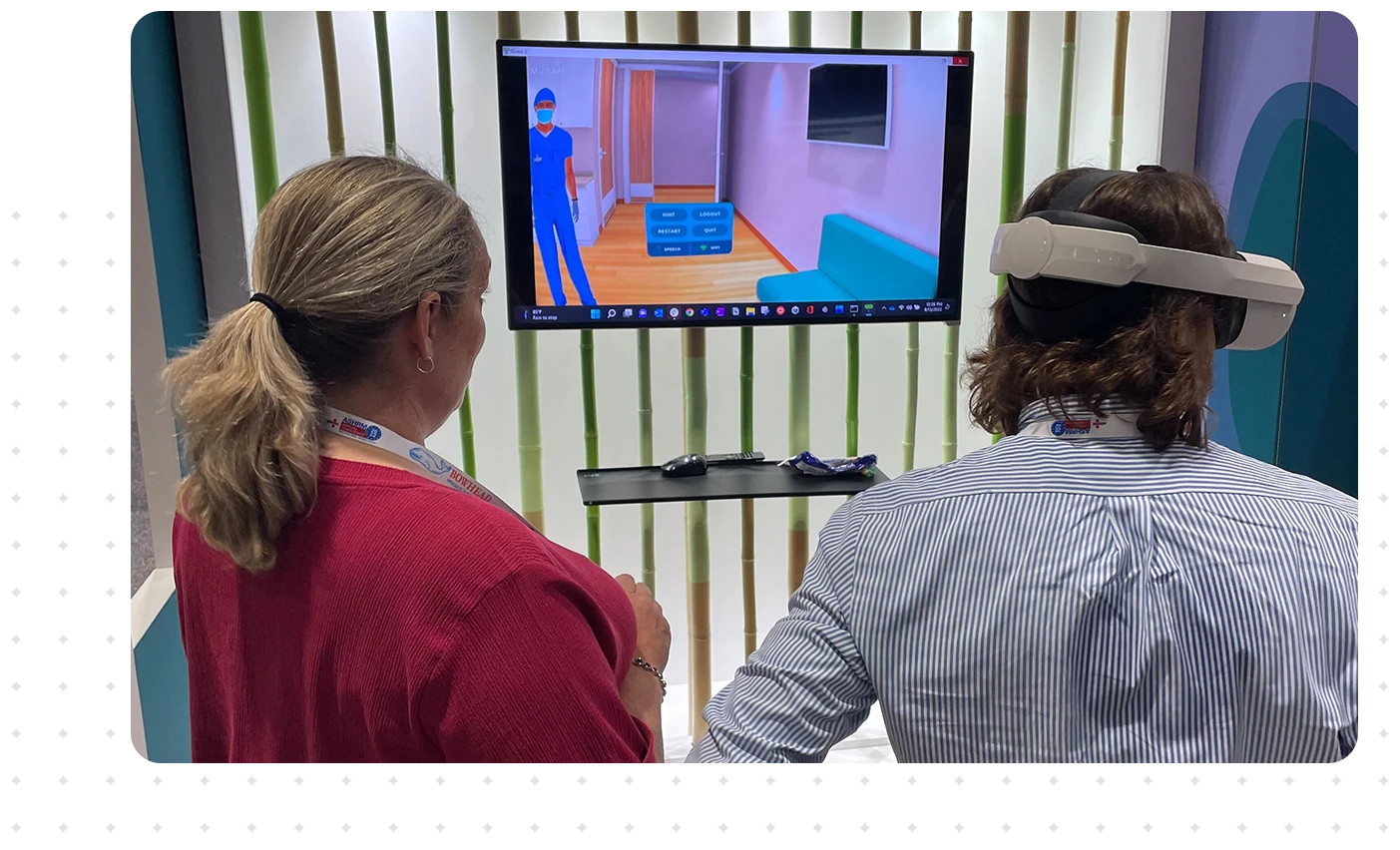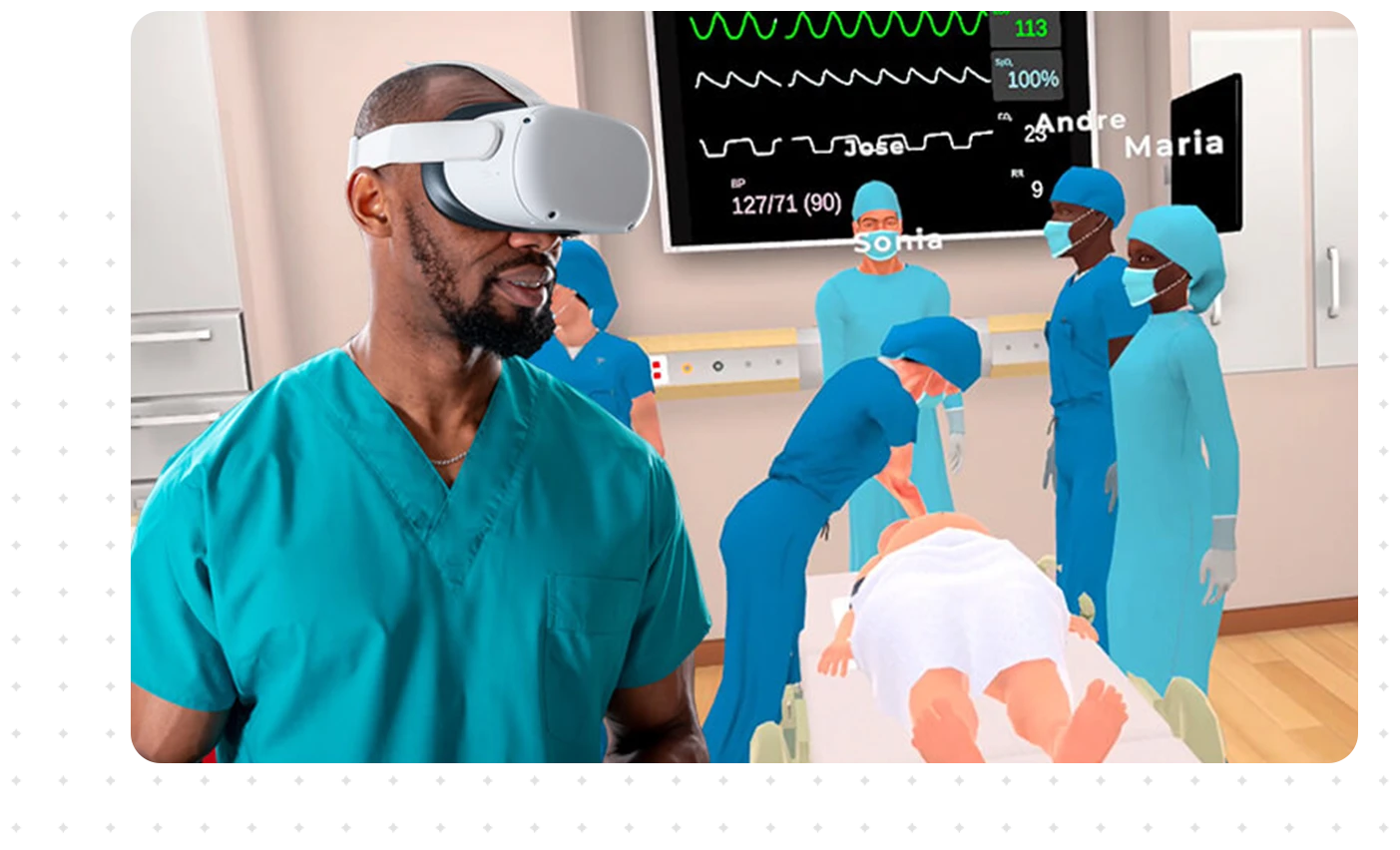What is VR?
E-learning, classroom training, and high-fidelity simulations all play a part in the holistic curriculum for a learner, making Virtual Reality the sweet spot. It drives users to pursue interactive learning— scientifically proven to be more effective.
Defining Virtual Reality…
Virtual Reality, or “VR,” refers to computer-generated simulations of a three-dimensional environment that provide an immersive experience for users. Unlike traditional computer interfaces that are two-dimensional or flat, VR allows users to feel as if they are actually inside the virtual environment.
An Immersive Experience
An immersive experience completely engages the senses and creates a feeling of being surrounded by a simulated or virtual environment. In an immersive experience, the individual is transported to a different world or reality, and often has a feeling of being an active participant rather than just an observer.


Immersive, Scalable, and Portable
An immersive experience can be interactive by allowing users to control and influence the environment they are immersed in. VR is scalable and portable, giving users the freedom and flexibility to jump into realistic VR simulations any hour of the day, any day of the year, anywhere.
VR Training in Healthcare
With VR training, healthcare professionals can build procedural memory to practice and improve their skills and knowledge in a safe, controlled, and realistic environment.

Why do we utilize the team lead role in simulation?
The team lead role is specifically designed to encourage clinicians to speak up and take charge in scenarios that are designed to help them fine tune their expertise and build their confidence. It also helps reinforce understanding of each teammates role outside of their typical immediate sphere.

